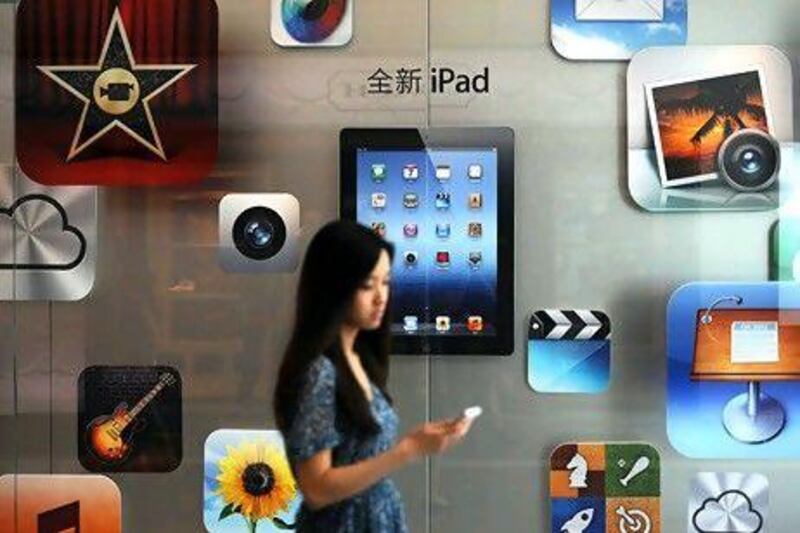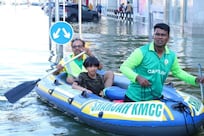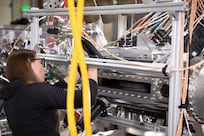Flash back to 1983 - the year Michael Jackson introduced the world to his moonwalk, Tokyo Disneyland opened and a new electronic device hit the market promising to make life "infinitely easier for you and your family, saving time for the things you really want to do".
Known as Viewtron, the technology linked a television set with a keyboard and phone line, and it was feature-forward in many ways: it could look up bank account information, airline schedules and shop online; plus pull up digital news articles, weather updates and sports coverage.
In short, the Viewtron could functionally do what companies such as Sony, Panasonic and LG have started offering in their Web-connected TVs only in recent years.
But Viewtron's success was limited and it is now regarded as one of many devices that launched before their time. Other systems have disappeared after manufacturers spent millions developing and promoting them but ultimately missed the mark on what customers wanted.
The list of digital duds includes both small and big brands such as Atari, Apple and the Zune from Microsoft, which pulled the plug on its struggling five-year-old MP3 player last year.
Analysts cite various reasons for the death of such devices over the years in a consumer electronics market that has grown to a US$206 billion (Dh756.65bn) in the United States alone.
One of the most common explanations is that tech visionaries and engineers had high ambitions for the kinds of features they wanted to roll out but lacked the computational horsepower to follow through.
"Even today, computational power is a scarce resource," says Jordan Selburn, a senior principal analyst at IHS iSuppli, a research firm focused on the electronics market.
"Take that back to the 1980s when they were trying to do some pretty heavy-lifting types of functions."
Back then, gadgets capable of performing specialised functions such as the scientific calculator or electronic dictionary sold well, especially among students. Relatively newer devices tried to make inroads with varying degrees of success.
Products such as some of the earliest personal digital assistants (PDAs) fascinated early adopters but they ultimately fell short of the blockbuster sales status now enjoyed by the biggest smartphone makers Apple and Samsung.
"The PDA - I remember when I was using mine. It wasn't really intriguing enough," says Julien Pascual, the chief executive and founder of EmiratesAvenue.com, an electronics retailer in the UAE. "It was still quite a lot of work to get information."
In the 1990s, glitchy or unreliable software continued to test the patience of consumers who bought some PDAs.
Apple's Newton MessagePad sold just 50,000 units in the first few months after it went on sale in 1993. The 8-inch, $700 PDA included a stylus to handwrite messages, but its text-recognition software was notoriously inaccurate.
"That takes some lifting and they just didn't have the steroids back then," says Mr Selburn.
In 1998, Steve Jobs, Apple's chief executive, cut the cord on the Newton platform, "even though fans demonstrated in the parking lot of Apple's Cupertino campus", according to an article in the tech publication Wired.
"Apple officials gave them coffee and cookies but refused to resurrect the device."
Other gadgets failed to gain enough traction among supporting players within the tech industry and customers ultimately found alternatives that were more popular - and less expensive.
Such was the case with Atari's Lynx, the first hand-held gaming system to include a colour screen. The $199 device failed to draw enough interest among videogame developers when it debuted in 1989 - the same year Nintendo released its Game Boy for just $109.
While Nintendo went on to sell more than 118 million Game Boy units with its various incarnations, the Lynx failed to show enough bite to become a household brand and was eventually killed off.
Sticker shock over pricing also contributed to the death of the Viewtron, which was created through a joint partnership between AT&T, a US telecoms company, and Knight Ridder, a now-defunct newspaper group. It first sold for $900 then was discounted to $600 when just half of the 5,000 projected subscribers signed on by the end of its first year in operation. The product was discontinued in 1986 after more than $50 million was reportedly lost while expanding the gadget's presence across the US.
Another reason devices such as the Viewtron failed, experts say, is because they debuted well before the proliferation of high-definition screens.
"Until you have HDTV-like resolution, it was just completely unfeasible," says Bob O'Donnell, a tech analyst at IDC, a market research firm. "Once you had that and you had ubiquitous wireless and broadband in the home, at least, you had the pieces in place."
Sharp, high-resolution tablet and smartphone screens are commonplace now and they are endangering another category of devices: the e-reader.
Amazon's Kindle Fire, the latest version of which was announced last month for as little as $159, is a colour tablet. While it can display books, it is not a dedicated e-reader like Amazon's new $119 Paperwhite product, which features e-ink that is easier on the reader's eyes.
Some analysts say more consumers now want to carry around a single device, such as Apple's iPad or another tablet, to display books, email and video, even if it means sacrificing the digital ink in an e-reader.
But that does not necessarily mean e-readers, which analysts say started selling swiftly just four years ago, will go down as the latest digital dud.
"This is Bambi Meets Godzilla - take two," says Mr Selburn.
"The role of Bambi is played by the e-book reader and the role of Godzilla is the tablet," he adds.
"For a product category that's essentially as young as Bambi it's already peaked and declining - it's a successful one."
business@thenational.ae
From PDAs to the Atari Lynx: the gadgets that lacked bite
The tech graveyard is full of ambitious products that failed, including the precursor to the iPhone and a rival of Nintendo's Game Boy.

Editor's picks
More from the national




